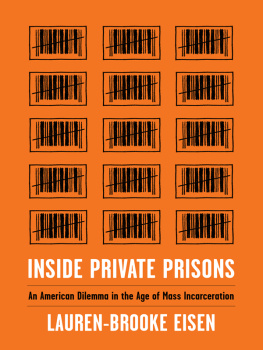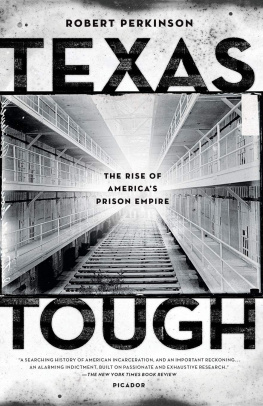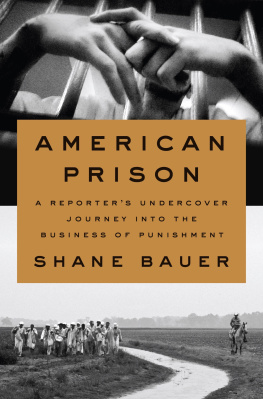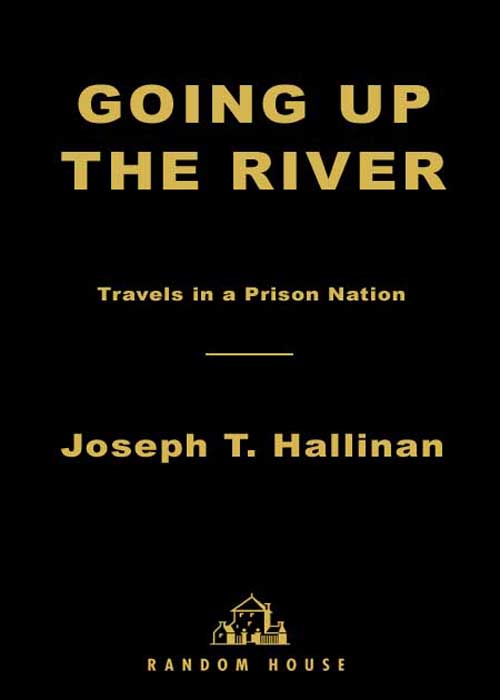
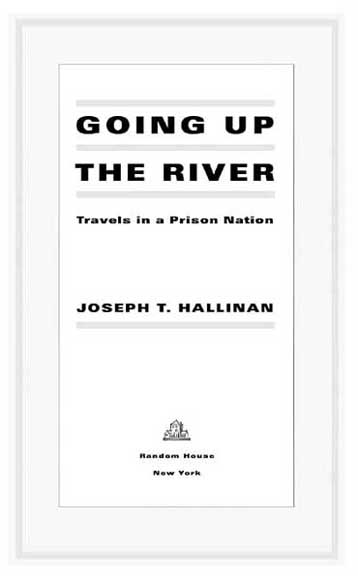
CONTENTS
This book is dedicated
TO THE MEMORY OF MY MOTHER,
who would have been proud,
AND TO MY FATHER,
whose love and faith have never wavered
One final thought. Too much use is made of the prison.
FREDERICK HOWARD WINES ,
An Historical Sketch of the Rise of the Penitentiary System (1895)
BEGINNINGS
In 1995, I met a man who would change the way I thought about prisons. His name was Jack Kyle, and he was a tough law-and-order Texan. He had blue eyes and swan-white hair, kept so neatly trimmed that it barely showed beneath the brim of his pale Stetson. He had been a warden in the 1960s and had nothing against locking folks up. He believed in it. But things had gotten out of hand.
It used to be, he said, that nobody wanted prisons. Couldnt build em in the state of Texas. But after the Texas economy went bust in the mid-1980s, people began to reconsider. Now, everbody wants em. He thought this was a mistake. People think theyre just another place to work, he warned me. But theyre not.
I found out later what he meant. In the East Texas town of Livingston, I sat for a week on hard wooden benches in the courtroom of Judge Joe Ned Dean and watched as a skinny young prison guard made history. His name was Joel Lambright, Jr.Joe Boy to his familyand he was the first guard in Texas history to be convicted of killing an inmate. Like so many other young menJoe Boy was then just twenty years oldhe had been lured to prison by prospects of a good working-class job, the kind that had all but disappeared from places like Livingston.
I began, there in that courtroom, to understand the power of the prison industry. I saw how the merger of punishment and profit was reshaping this country; how young men like Joe Boy, who might in another generation have joined the Army or gone to work in a factory, were now turning to prison for their livelihood. I saw job-hungry towns, desperate for something to keep their young people from leaving, compete for prisons the way they once had for industries, offering tax abatements and job training and all sorts of municipal goodies.
I had come to Livingston from Washington, D.C., where I wrote about crime and punishment as a national correspondent for a chain of daily newspapers. I had covered the subject on and off for the better part of a decade. But nothing I had ever written about intrigued me as much as what I had seen in Texas. For the next four years I wrote about prisons almost exclusively. I visited them as often as I could, traveling from prison to prison the way some might travel Civil War battlefields, ticking off the famous sites. Once, I was parked outside the state prison in Joliet, Illinois. It is one of the oldest prisons in the United States, a nineteenth-century bastille that seems to lack only a moat and a drawbridge. I was sitting in my car in front of the prison, just taking in the immensity of the place, when a guard walked out, cast a wary eye on me, and asked what I was up to. I told him there was nothing to worry about, I was just a prison buff.
A prison buff?
Yes, sir.
He shook his head. You ever thought about girls?
Much of this book takes place in Texas, in part because Texas is to the prison culture of the 1990s what California was to the youth culture of the 1960s: its where its happening. Texas has more prisons than any state in the country and imprisons more of its people, per capita, than any state except Louisiana. Instead of Berkeley, Texas has Beeville. Like many small towns in America, Beeville has been hit hard in the last twenty yearsfirst by the oil bust of the 1980s, then by the military base closings of the 1990s. But today, a prison stands where Navy pilots once landed jets, and the towns people are happy. I love it. I really do, said Dave Stafford, who quit his job as a public school teacher to work at one of the towns two prisons.
Before I talked with Dave I had visited the Garza Unit, the prison that used to be an air base, and walked along runways still streaked with skid marks. Standing there, I found it easy to see how, after the end of the Cold War, the military-industrial complex has given way to a prison-industrial complex. Like military bases, prisons provide jobs while simultaneously providing a sense of securityin their case not from communists but from criminals. In every prison town I visited, people were eager to talk to me about crimeabout how bad it was, about how something needed to be done. Brad Arvin, a Beeville community booster, told me crime was everywhere in his townjust as near as your morning paper, he said. But when I asked him whether he knew anybody who had been the victim of a crime, he couldnt think of one.
After I left Beeville I began to wonder, as Jack Kyle had, whether the tail was now wagging the dog: whether we were building prisons not because we needed them but because we wanted them. Across the country I saw communities that had whipped themselves into hard-line attitudes that seemed to justify the big, expensive prisons built in their towns. Over the last twenty years, with virtually no national debate, Americans had started to embrace prisons as never before. In 1939, at the end of the reign of gangsters like Al Capone, we sent 137 Americans to prison for every 100,000 citizensa high-water mark that stood for four decades. But in 1980 we broke that record, and weve been breaking it ever since. By 1999, the U.S. incarceration rate stood at a phenomenal 476 per 100,000more than triple the rate of the Capone era.
Yet most new prisons are built not in black communities but in white ones, usually rural white ones. A century ago, when most inmates were white and many had lived on farms, this might have made sense. But not anymore. Today, most inmates are black (49 percent) or Hispanic (18 percent). Typically, they come from the cities. Sticking them in the boondocks, where family members have a hard time visiting, where guards have likely never encountered anyone like them, almost always leads to problems, often violent ones. Yet this is where we build our prisons. These communities profit most from the prison boom: from the construction jobs and the prison jobs and all the spin-off business that prisons create. Yet it is hard to ignore that those getting rich are usually white and those in prison are usually not.
People arent being imprisoned just so someone can make a buck. Its not that pat. But the prison industrys economic significance is now so vast that it contributes to a political climate in which being tough on crime is on every lip and in every platform. In many states, private prison companies are now major campaign contributors, as are unions for correctional officers. Crime is big business, and the people who earn their living from it can be expected to protect the status quo.
Few people complain. Prisons are tremendous public works projects, throwing off money as a wet dog throws off water. When I began my travels, I had no idea of the amount of money to be made from prisons, no idea that a single pay phone inside a prison could earn its owner $12,000 a year, or that a warden, if he played his cards right, could make himself a millionaire. But corporate America did. Giant firms like AT&T lined up at prison gates. The inmates on the other side of the fence, AT&T estimated, place $1 billion a year in long-distance phone calls. But unlike you or me, the inmates dont get to pick their long-distance carrierthe prison does. And so AT&T and its competitors learned that the way to get inmates as customers was to give the prison a legal kickback: on a one-dollar phone call, the prison might make forty or fifty cents. In no time, corrections departments became phone-call millionaires. In 1997, New York rang up $21.2 million from phone-call commissions. California made $17.6 million. Florida earned $13.8 million. Inmates do, though, get to choose among various brands of deodorant, shampoo, and toothpaste. So right behind AT&T in the prison line were companies like Procter & Gamble, maker of Crest, and Helene Curtis, the shampoo and deodorant people. It seemed that there was no limit to the ways American executives could devise to cash in on the prison boom.
Next page



